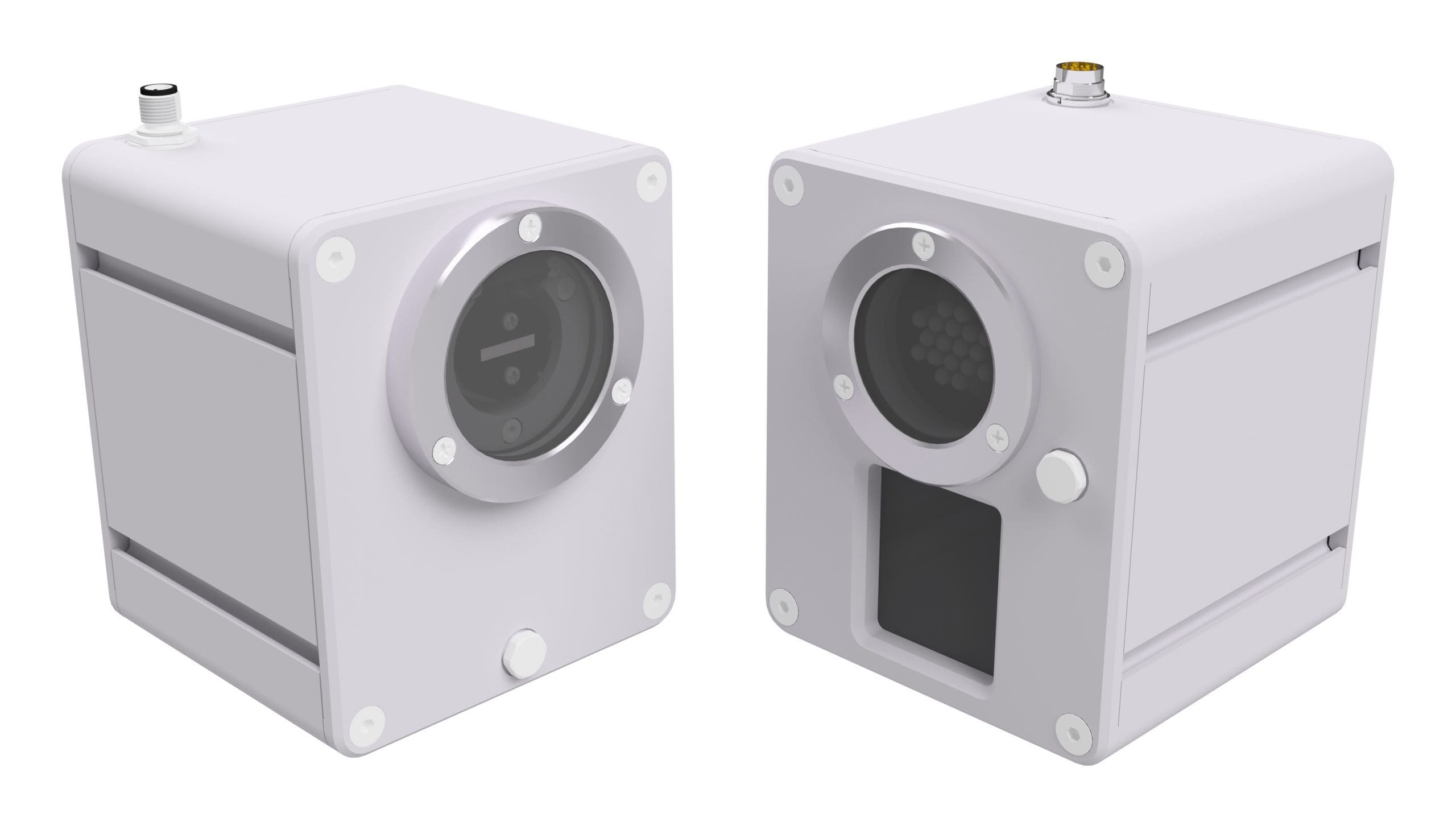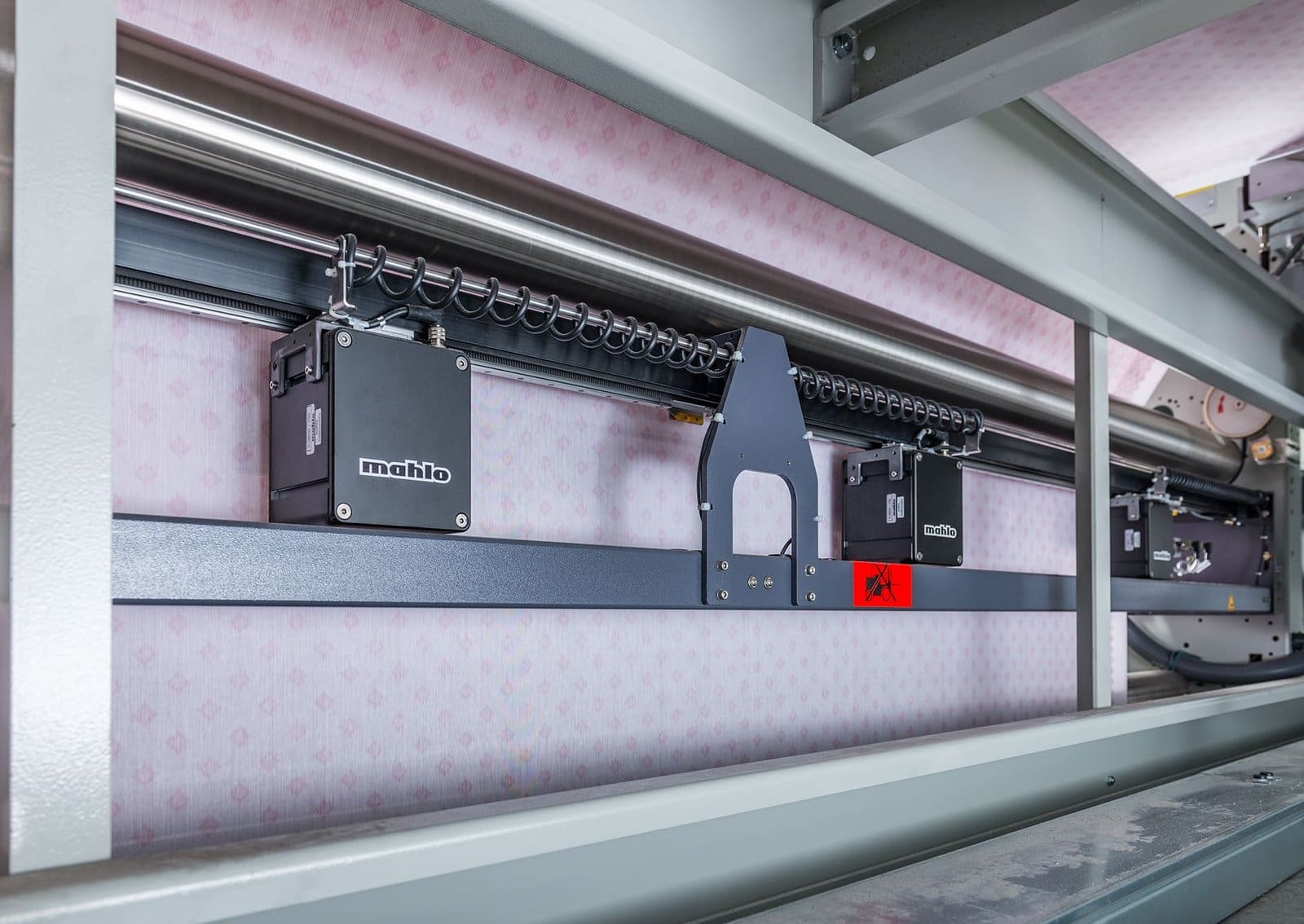Mahlo scanning systems detect distortion in any textile application
Whether woven, knitted or tufted, whether printed, coated, dyed, laminated, light or heavy: every textile manufacturer must produce thread, stitch or pattern straight goods. Distortions lower the quality and thus the price of the goods. They must therefore be reliably detected and removed at today’s standard fabric speeds, regardless of technical properties, haptics or appearance. Thanks to the largest sensor selection on the market, scanning systems from Mahlo GmbH + Co. KG detect virtually the entire spectrum of textile fabrics – and thus ensure straight goods.
“We give manufacturers the right tool to evaluate and monitor the condition of their fabric,” says Stephan Kehry, textile product manager at Mahlo. “Only with distortion detection that is optimally suited to their own product mix can they meet the increasing demands of the market.”

Fig. 1: Mahlo’s sensor portfolio
All-round talent optoelectronic scanning
For the majority of textile manufacturers, the solution for straight goods is optoelectronic scanning. “No other measuring principle can cover so many materials and applications fully automatically,” says Kehry. Developed by company founder Dr. Heinz Mahlo, the principle continues to set standards in the field of distortion detection today. Continuous further development and state-of-the-art digital technology make it possible to stay one step ahead of the ever more complex textile structures. “Our TK-12 sensor is capable of detecting weft and course distortion in virtually all textile structures and to determine the total distortion reliably and in real time.” This is achieved by using a suitable number of sensors that are evenly distributed across the fabric width. They detect and calculate the warpage in real time using an oscillating lens that registers the light-dark modulation. In this way, distortion is detected simultaneously across the entire width of the fabric. Distortion changes – such as in a seam – can be reacted to without delay. A connected automatic straightening machine or the machine operator can thus implement the corrections.
Imaging scanning as a supplement
For the few cases that cannot be scanned with the TK-12 optoelectronic sensor, Mahlo uses imaging scanning as a supplement. “Exceptions are, for example, fabrics in which, due to low fabric speeds and yarn counts, a low yarn frequency is with little pronounced light-dark modulation,” explains the textile expert. But the imaging method is also the best option for manufacturers of woven crepe, certain blackout fabrics, fabrics with untwisted weft or structures with small patterns, he says.
The course of the weft and warp threads is recorded by means of a high-resolution area scan camera with an imaging area of 4×3 cm. An intelligent algorithm in the software evaluates the captured image and determines the degree of distortion.
The best of two scanning systems

Fig. 2: Hybrid scanning system
If you want to combine the best of both worlds for your production line, Mahlo opts for hybrid scanning, a combination of optoelectronic and imaging scanning. “It combines the advantages of both individual systems to form a superior system that takes a lot of work off the manufacturer’s hands,” describes Kehry. This is because, depending on the material type of the goods passing through, the software independently selects which warpage detection generates the most stable evaluation. “Especially with a wide product range with frequent fabric changes, hybrid scanning brings enormous relief.
Specialist for carpets
Special circumstances require special measures. This also applies to the use of scanning systems in certain industries. “Carpets, for example, have a very low weft or tufting row density due to their mostly coarse yarn qualities. At the same time, fabric speeds on most coating lines are relatively low.” For these special conditions, Mahlo has developed its own camera sensor that covers a significantly larger area during scanning and thus makes coarse cross structures visible.

Fig. 3: Carpet often has coarse cross structures
Special case lace and co.
Carpets are not the only applications that challenge scanning systems, however. “There are quite a few textiles, for example patterned woven and knitted fabrics, lace or terry fabrics, which are extremely difficult or impossible to scan with conventional technology and therefore cannot be straightened,” says the Textile Product Manager. For these applications, straightening according to the weft thread is either not practical or not possible, he adds. “But of course, manufacturers of these fabrics also want straight and thus high-quality goods.” To detect the warpage value of lace and co. and successfully straighten them, Mahlo uses the Patcontrol PCS-20. Thanks to special software, the camera-based system can detect, evaluate and record several parameters of a fabric web, including skew and sheet distortion, longitudinal and cross repeat and fabric width.
“Scanning systems are essential for thread-straight and thus high-quality fabric,” Kehry summarizes. Depending on the application, different sensors are available from Mahlo. “This way, everyone gets exactly the system they really need.”

